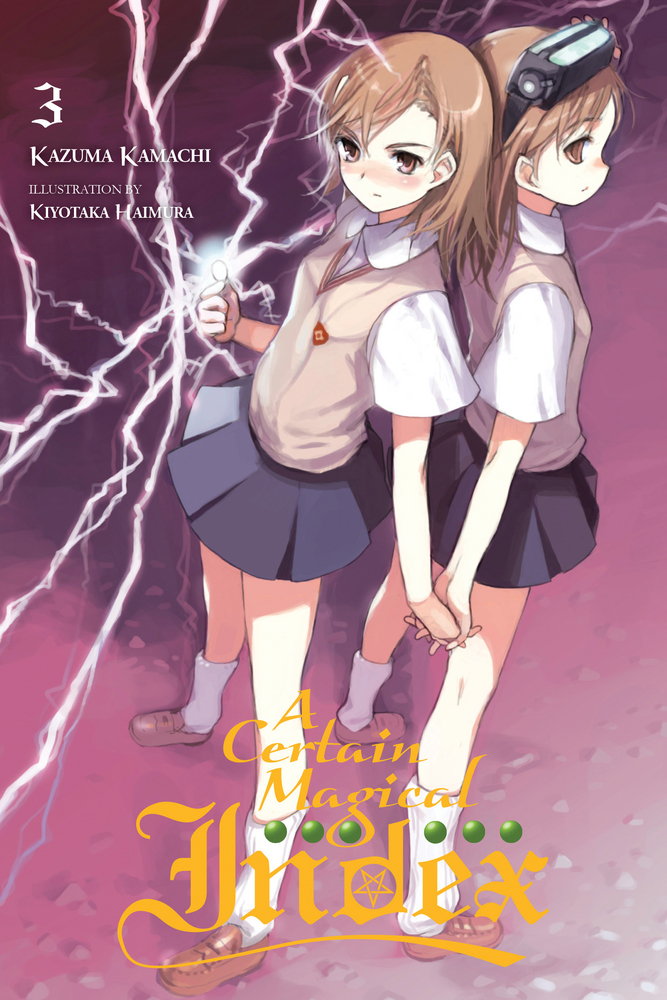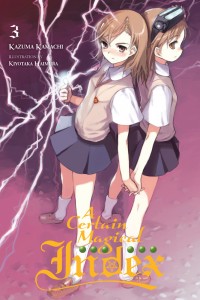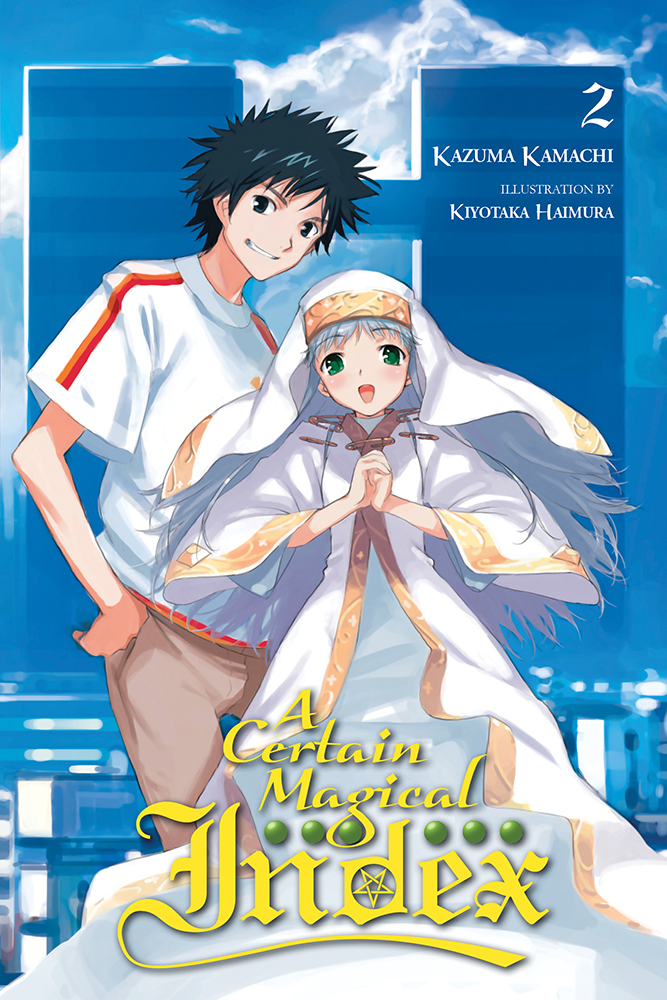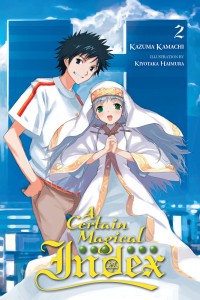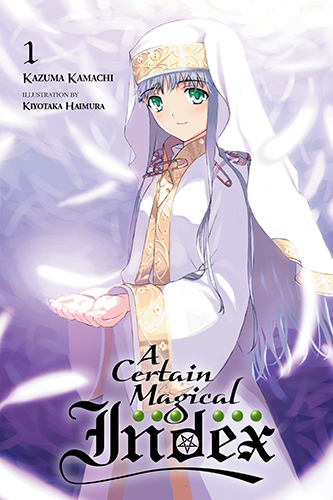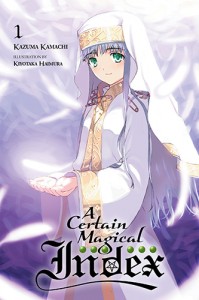By Kazumi Kamachi and Kiyotaka Haimura. Released in Japan as “To Aru Majutsu no Index” by ASCII Mediaworks. Released in North America by Yen On.
Index had a good start, but I felt the second novel was a bit rushed and inconsequential. Luckily, there’s no such issues here, as Kamachi puts out one of the strongest books in the Index series, and one with a lot of consequences, not least of which is the inspiration for side-series A Certain Scientific Railgun, which especially in the West has become more popular than its supposed parent. We continue to examine the world our heroes live in, this time entirely on the ‘Science’ side of things, and see just how far researchers will go in the search for knowledge and power, a running theme in this series on both the Science AND Magic sides. And we also meet a few characters who will prove very important down the road, for reasons that I will awkwardly try not to spoil here.
Introduced in this volume: Kuroko Shirai, Misaka 10032 (aka Misaka Imouto) and her clone sisters, Accelerator, Maika Tsuchimikado (who I had forgotten gets introduced before her brother, though blink and you’ll miss her appearance.) For Railgun readers, well, you know this one. In fact, you know more than Index readers, as Railgun expanded this arc greatly.
The series may have as one of its main themes that trying to achieve knowledge for its own sake is a dangerous thing, but I can’t really ignore the fact that the series also has its unironic shonen side to it. This seems to aggravate readers, and not just in Index, as I know a lot of long-running shonen series have fans who keep hoping people will get killed off or the heroes will fail just so that manga can be more like DC Comics. Likewise, Index (who, along with Himegami, barely appears in this volume) is a lazy, hungry ball of moe, and therefore jars with anyone who wants to take A Certain Magical Index seriously. But I think it’s the tension between the two that makes it interesting – Touma goes through a ridiculous amount of hurt here, and the idea that he’s still getting up near the end of the book is laughable – but that’s what you do in shonen. You get back up.
Mikoto gets her first major role here, and I’m amused at the difference between the way she acts around Touma and the way Kuroko says that she is afterwards – dealing with Touma relaxes her, which is important given what she’s been trying to achieve. This isn’t her series, so she doesn’t get to save the day, but it’s her pain, and desire to kill herself if it will help to save her clones, that drives Touma to go beyond the impossible again and save her. She’s a serious girl, who clearly places a lot of weight on the choices she makes, even if she’s ignorant of what they mean. After this book, her popularity skyrocketed even higher, and I imagine Railgun was in development by around the 5th volume of Index.
Kuroko does appear here, but doesn’t do much beyond glomp Mikoto a couple of times and give exposition to Touma. Her lecherous habits will have to wait for a future volume for me to be irritated by them. Accelerator is more interesting. I’d forgotten that he actually had some depth here beyond “I am the villain of this arc”. He’s clearly bored with the entire experiment, demanding from the Sisters that they at least make it worth his while to bother coming out. He also states outright why he’s doing this – to be left alone. Being the most powerful Level 5 in the city means that everyone tries to challenge him all the time. This is why he gets so excited when Misaka Imouto, and later on Touma, actually manage to hurt him a little bit. It elevates the tedium. Unlike Isard from last volume, he’s not mentioned at all in the Epilogue beyond the experiment being suspended. The last we see of him is flying through the air via Touma Airways. I wonder if he’ll be back? (Spoiler: Yes, he will be back.)
This was also the first volume where I didn’t find Kamachi’s writing style difficult to get into. He’s still a very eccentric writer, and his narration can meander much of the time, such as when he’s discussing Japanese baseball pitchers, or explaining the plot of Index Volume 1 because Touma’s lost his memory and Mikoto wasn’t there. But it’s a page turner, even more than the last two, and you really want to find out what happens next. Also, his exposition, though frequent and voluminous, can be quite interesting. Not so much worldbuilding as a world textbook. Yen’s translation is quite good. Note they have a company policy of no honorifics, so Misaka Imouto is Little Misaka, and Kuroko says Big Sister rather than Oneesama. I think this is fine, though don’t be surprised if I tend towards what I’m familiar with in future reviews. More importantly, Misaka Imouto’s eccentric speech pattern is kept intact, which is hopeful news for Last Order fans waiting for Volume 5.
If you haven’t read any Index and want a volume that will show you why it’s popular, skip the first two and get this one. It really is excellent. Also, a reminder that Touma and Index spend the entire volume carrying cats around.
